Amidst the grasslands and agricultural fields of South Asia, a small bird with a distinctive call and striking appearance resides—the Black Francolin (Francolinus francolinus). Renowned for its elegant plumage, unique vocalizations, and terrestrial lifestyle, this bird captivates the hearts of birdwatchers and nature enthusiasts. Let’s embark on a journey into the fascinating world of the Black Francolin and explore the remarkable characteristics that make it a true gem of the grasslands.
Black Francolin video
Appearance and Plumage
The Black Francolin is a medium-sized bird, measuring approximately 33 centimeters (13 inches) in length. It displays sexual dimorphism, with males and females exhibiting different colorations. The male Black Francolin boasts a striking black plumage, adorned with white speckles and fine streaks across the body. Its black feathers are iridescent, shimmering with shades of green and purple in certain light conditions. The male also possesses a bright red beak and a conspicuous white patch on each side of its face.
In contrast, females have a more camouflaged appearance, with a mottled brown plumage that helps them blend seamlessly into their grassland habitats. They lack the distinctive facial markings and vibrant colors seen in males.
Habitat and Distribution
Black Francolins are native to South Asia, including countries such as India, Pakistan, Nepal, and Bangladesh. They are adaptable birds, occupying a range of grassland habitats, including open fields, agricultural lands, and scrublands. These birds thrive in environments where they can find cover and a sufficient food supply. They prefer areas with dense vegetation, which allows them to hide and forage for insects, seeds, and other small invertebrates.
Black Francolin images
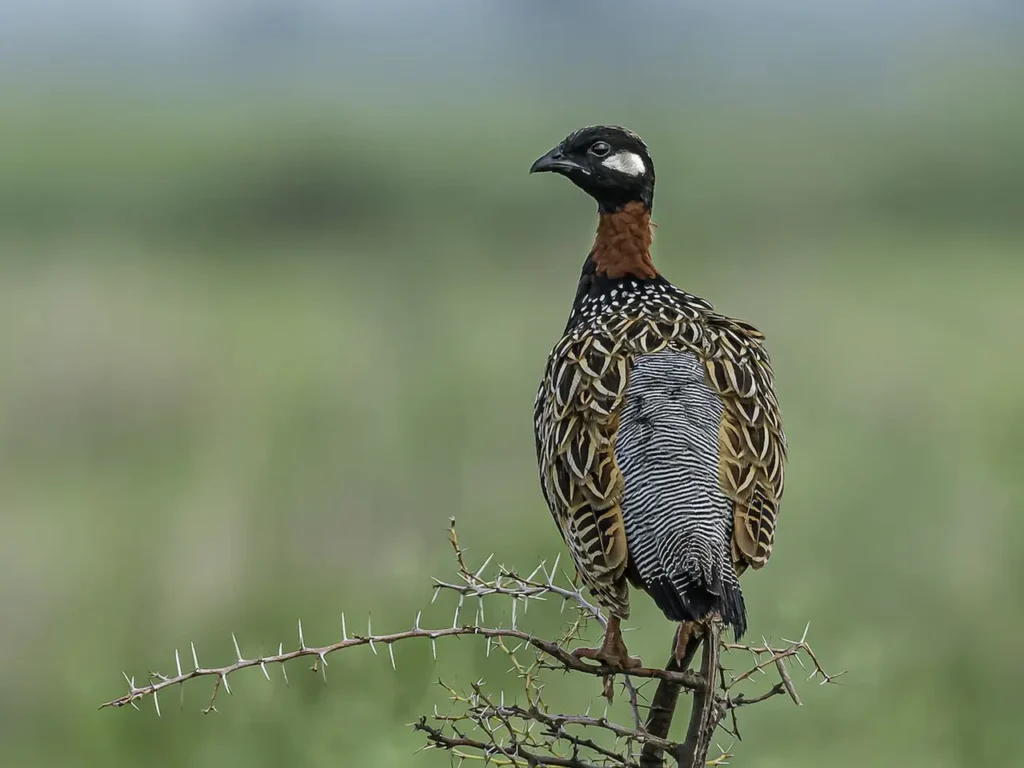
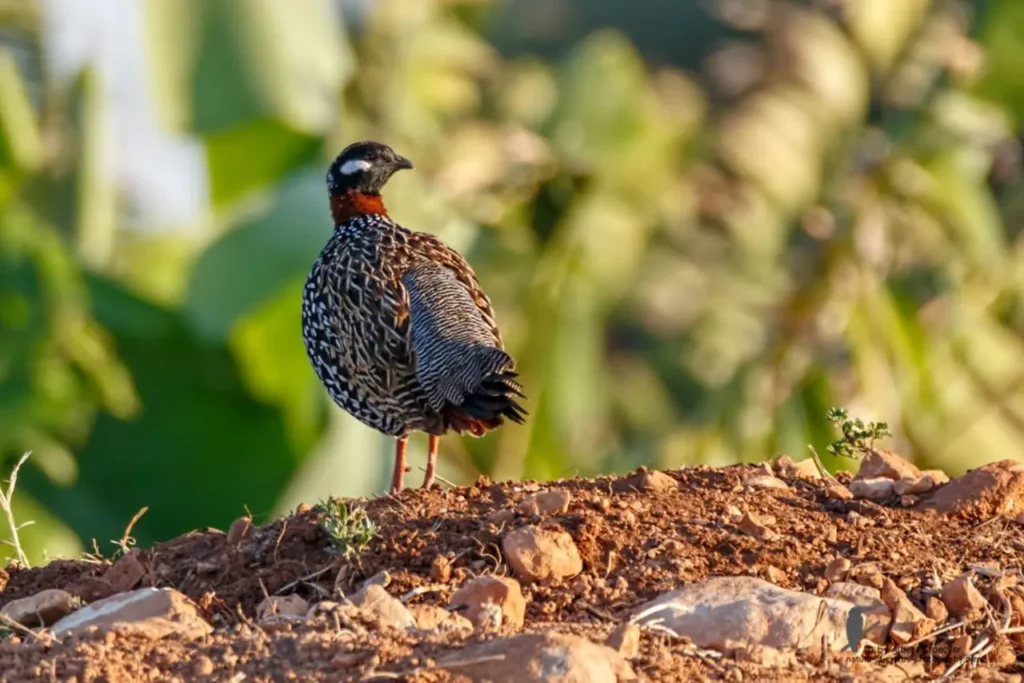
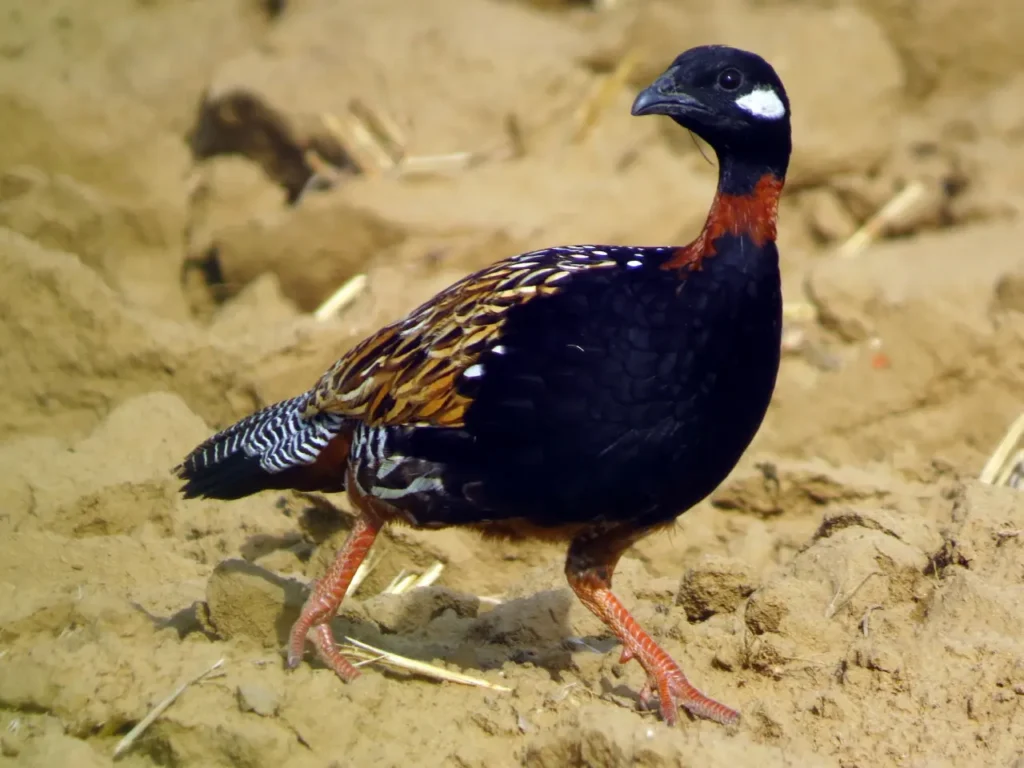
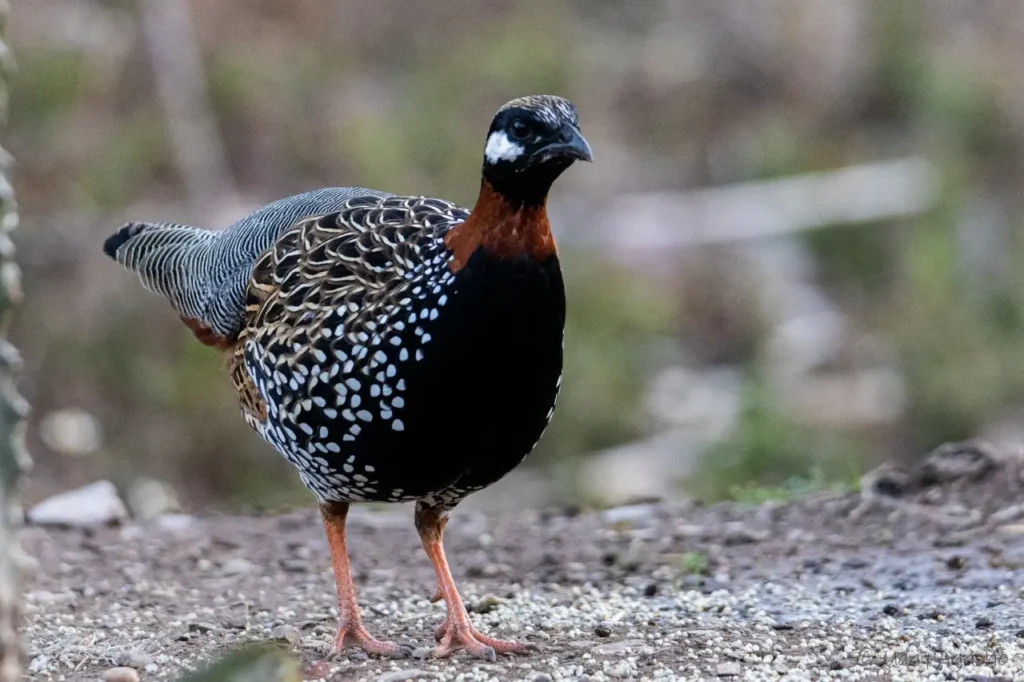
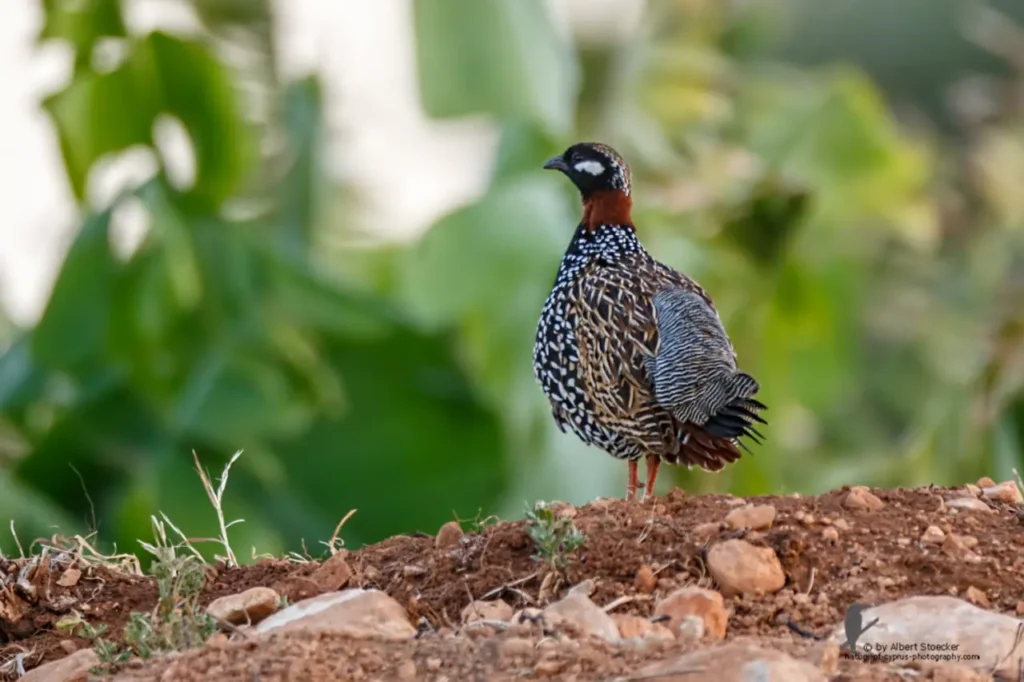
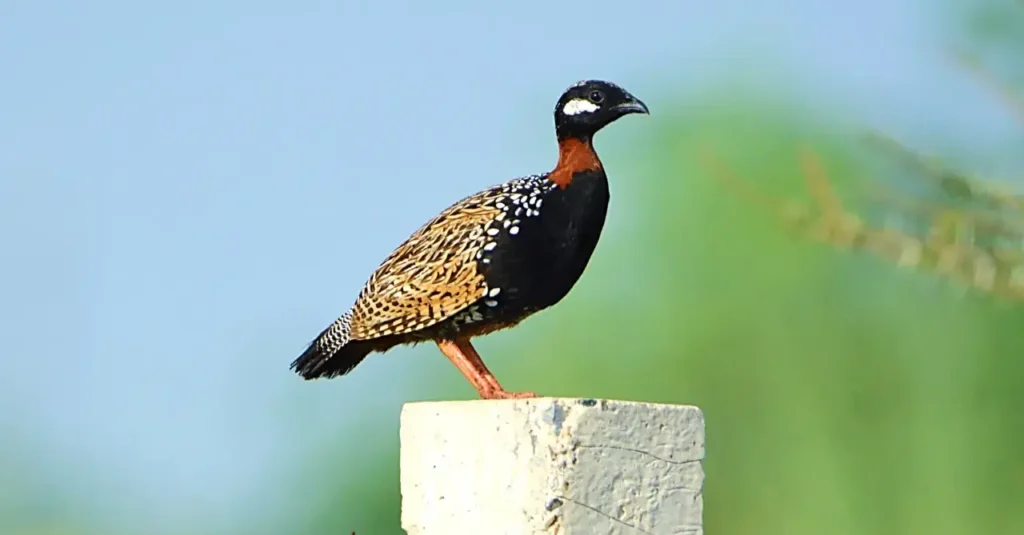
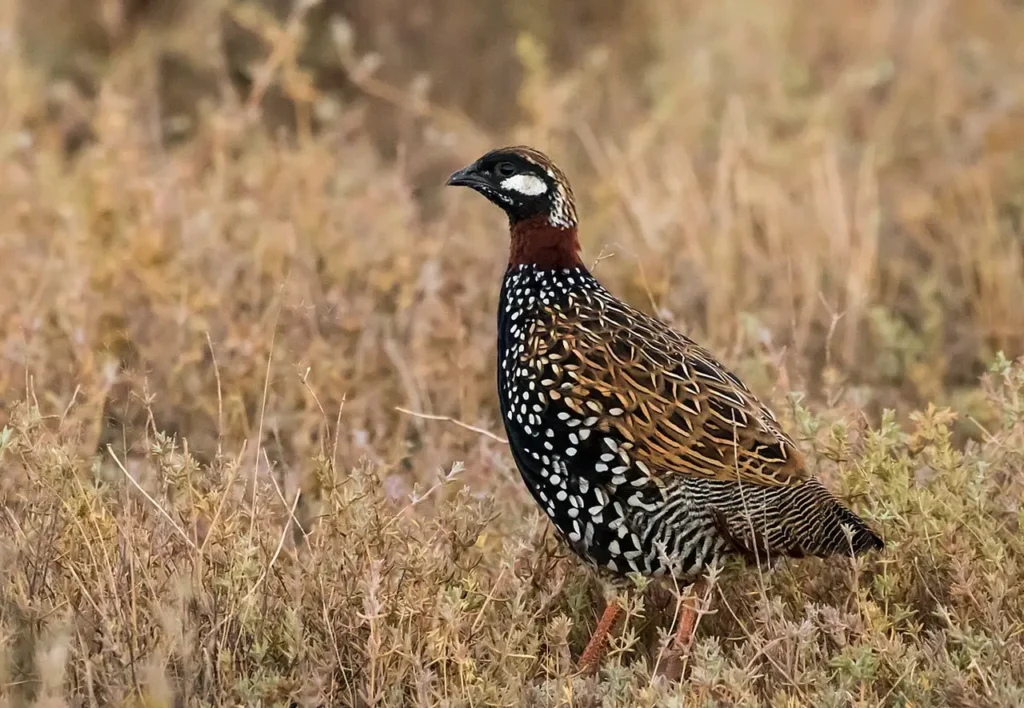
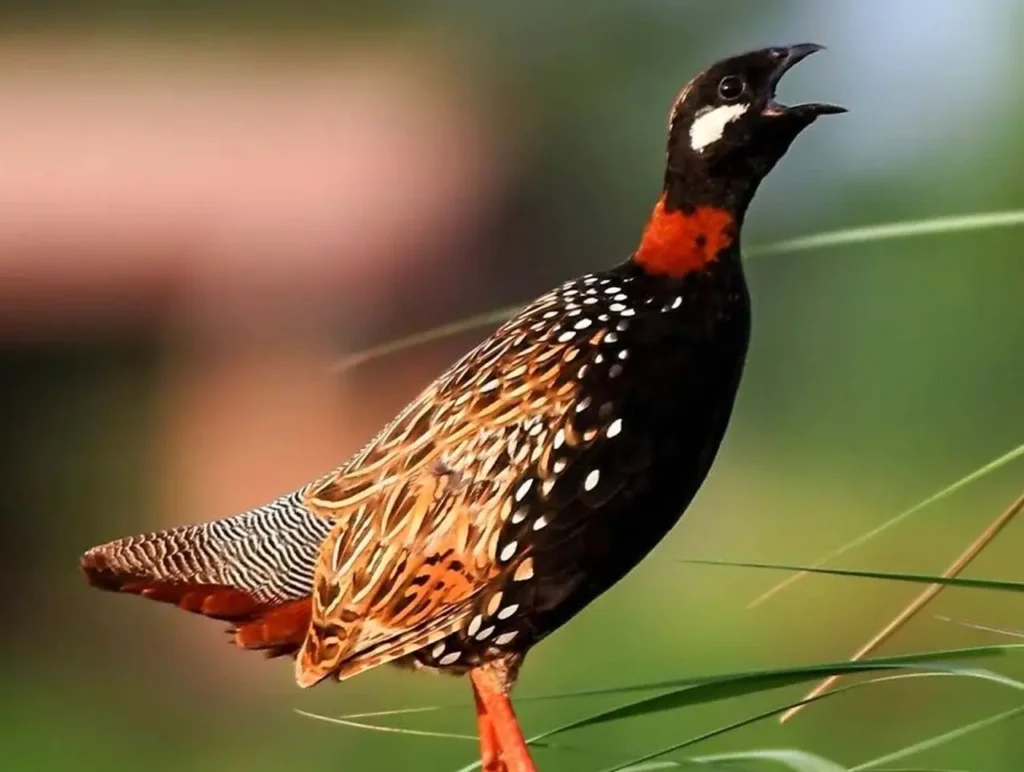
Behavior and Vocalizations
Black Francolins are primarily ground-dwelling birds, spending most of their time foraging and nesting on the grassy plains. They are skilled runners and prefer to evade predators through quick bursts of sprinting rather than taking flight. When startled, they will often explode into the air with a loud fluttering sound, quickly settling back down to the ground.
One of the most distinctive features of the Black Francolin is its vocalization. The male emits a loud and melodious call that carries across the grasslands. The call is a series of clear, rolling notes that can be described as “kru-kru-kru-kuuu” or “turrturrturrr-turru.” These vocalizations are particularly pronounced during the breeding season when males engage in territorial displays to attract females and deter rival males.
Breeding and Reproduction
During the breeding season, male Black Francolins establish territories and engage in courtship rituals to woo potential mates. They display elaborate behavior, including raising their crests, puffing out their chests, and performing elaborate dances. The male will call loudly and repeatedly to attract females and assert its dominance.
Once the female is enticed, she will lay a clutch of eggs in a concealed nest on the ground, usually in dense vegetation. The female incubates the eggs and cares for the chicks once they hatch, while the male maintains a watchful eye over the territory.
Conservation and Habitat Protection
While the Black Francolin is not currently considered globally threatened, it faces challenges due to habitat loss and degradation. The conversion of grasslands into agricultural lands, urbanization, and overgrazing pose significant threats to their populations. Efforts to conserve and protect grassland habitats, implement sustainable land management practices, and raise awareness about the importance of preserving these ecosystems are crucial for the long-term survival of the Black Francolin.
A Symbol of Grassland Melodies
The Black Francolin serves as a melodic ambassador of the grasslands, captivating with its elegant appearance and enchanting vocalizations. Its resilience in adapting to various habitats and its unique ground-dwelling lifestyle make it an extraordinary bird worth cherishing and protecting. By preserving grasslands and promoting responsible land management practices, we can ensure that the captivating presence of the Black Francolin continues to grace the grasslands and delight both avian enthusiasts and nature lovers for generations to come.








